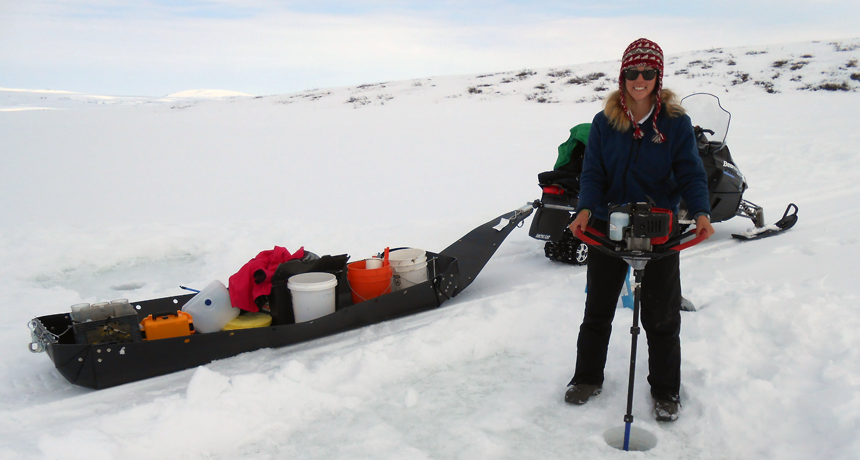Questions for ‘Under blanket of ice, lakes teem with life’

To reach this ice-covered lake near Toolik, Alaska, Jade Lawrence pulled equipment on sleds and snowmobiles. Here she uses an augur to drill through the snow and ice cover.
Steve Sadro

To reach this ice-covered lake near Toolik, Alaska, Jade Lawrence pulled equipment on sleds and snowmobiles. Here she uses an augur to drill through the snow and ice cover.
Steve Sadro